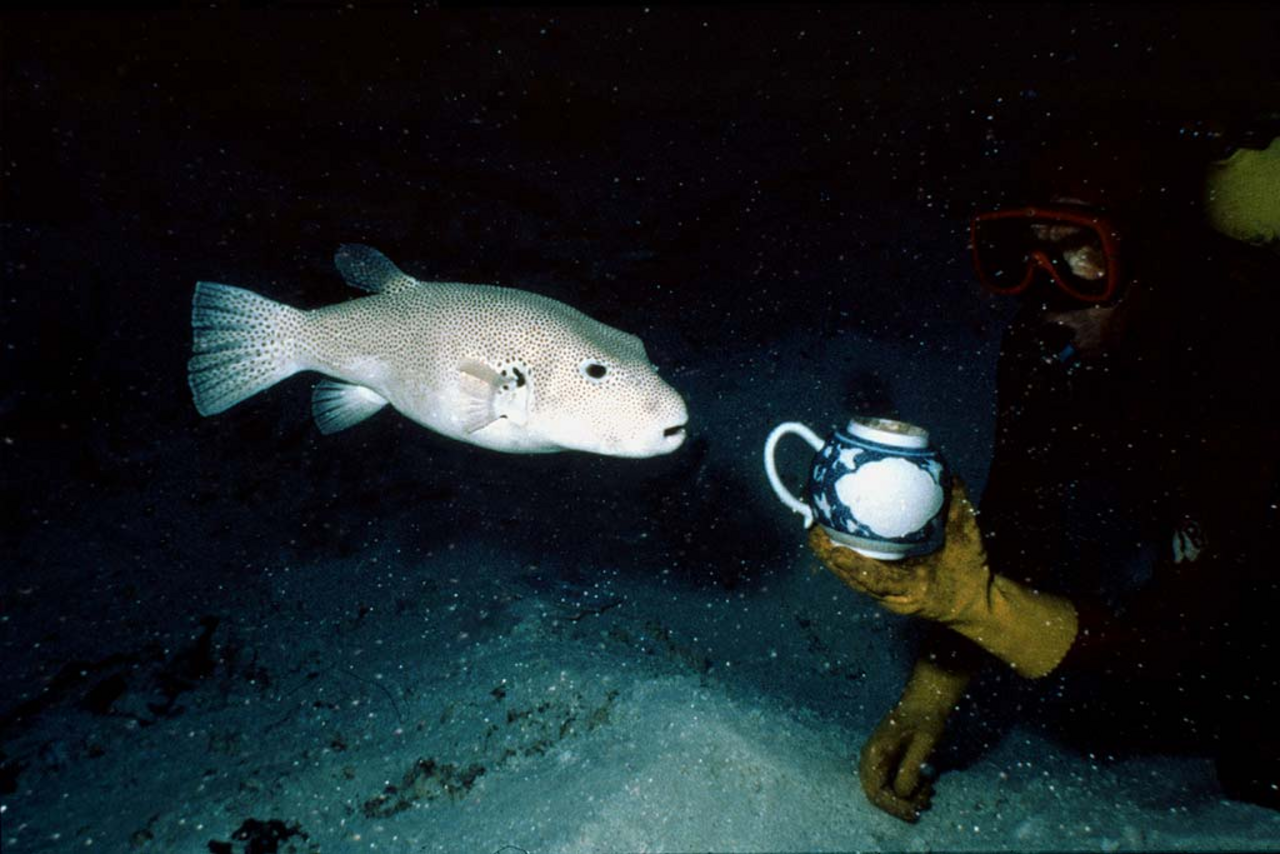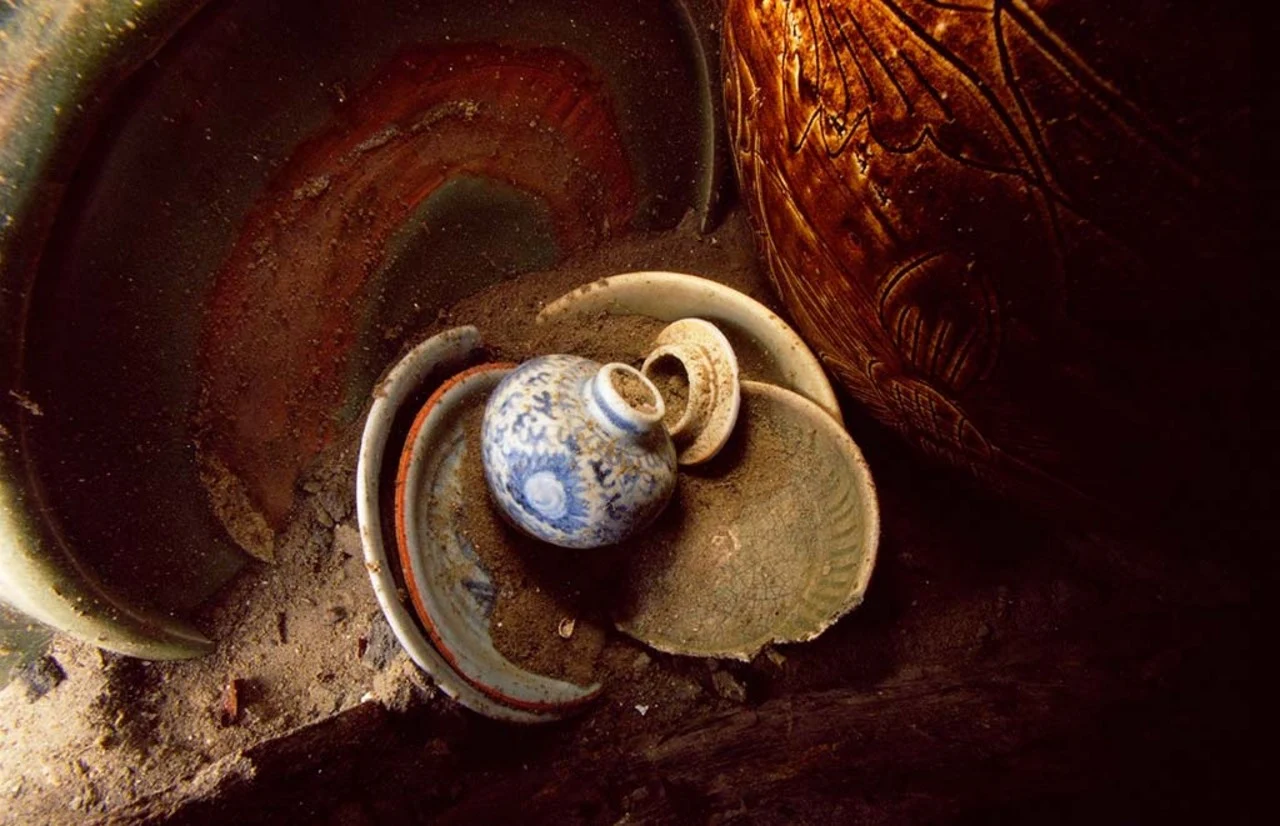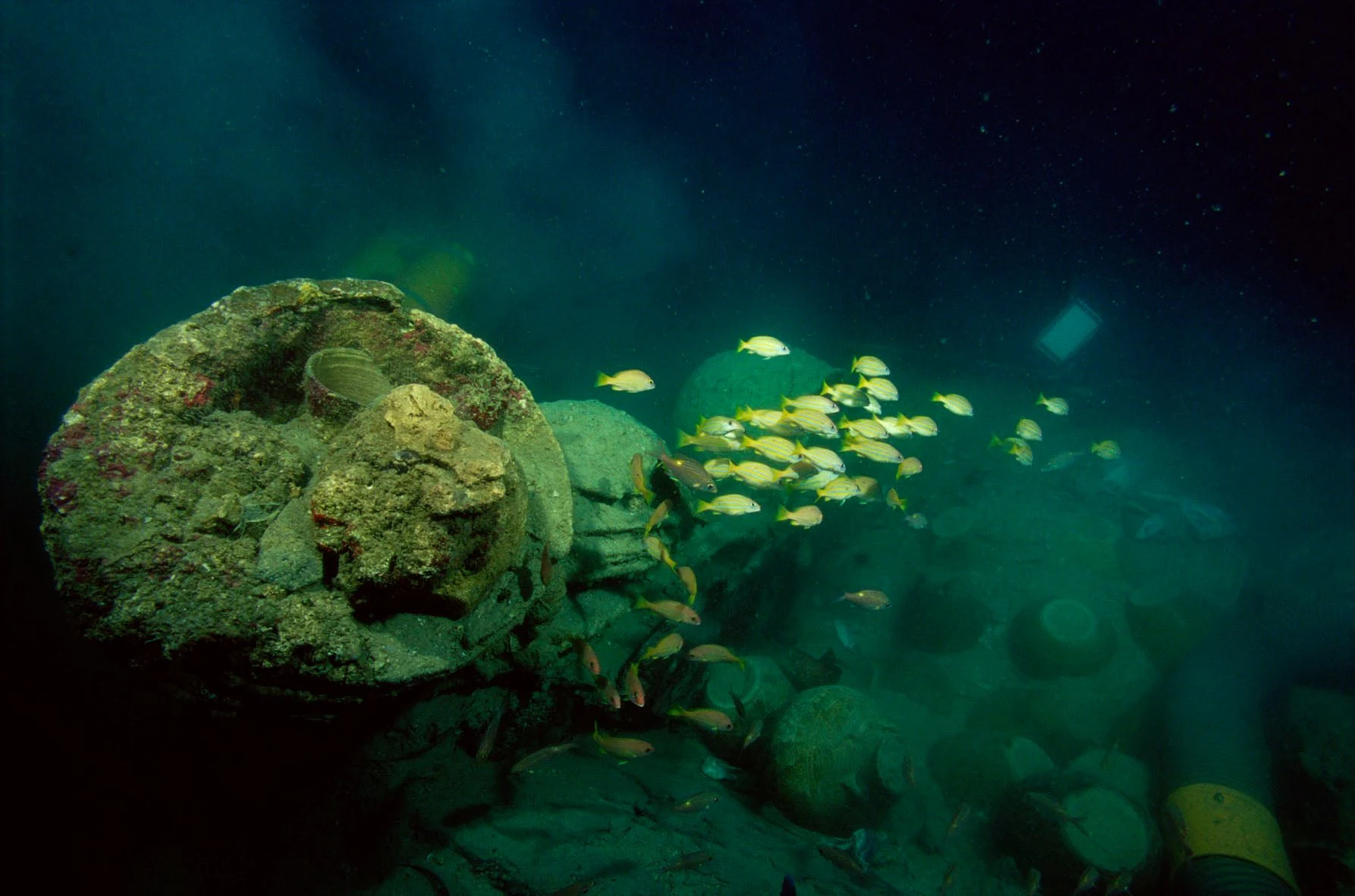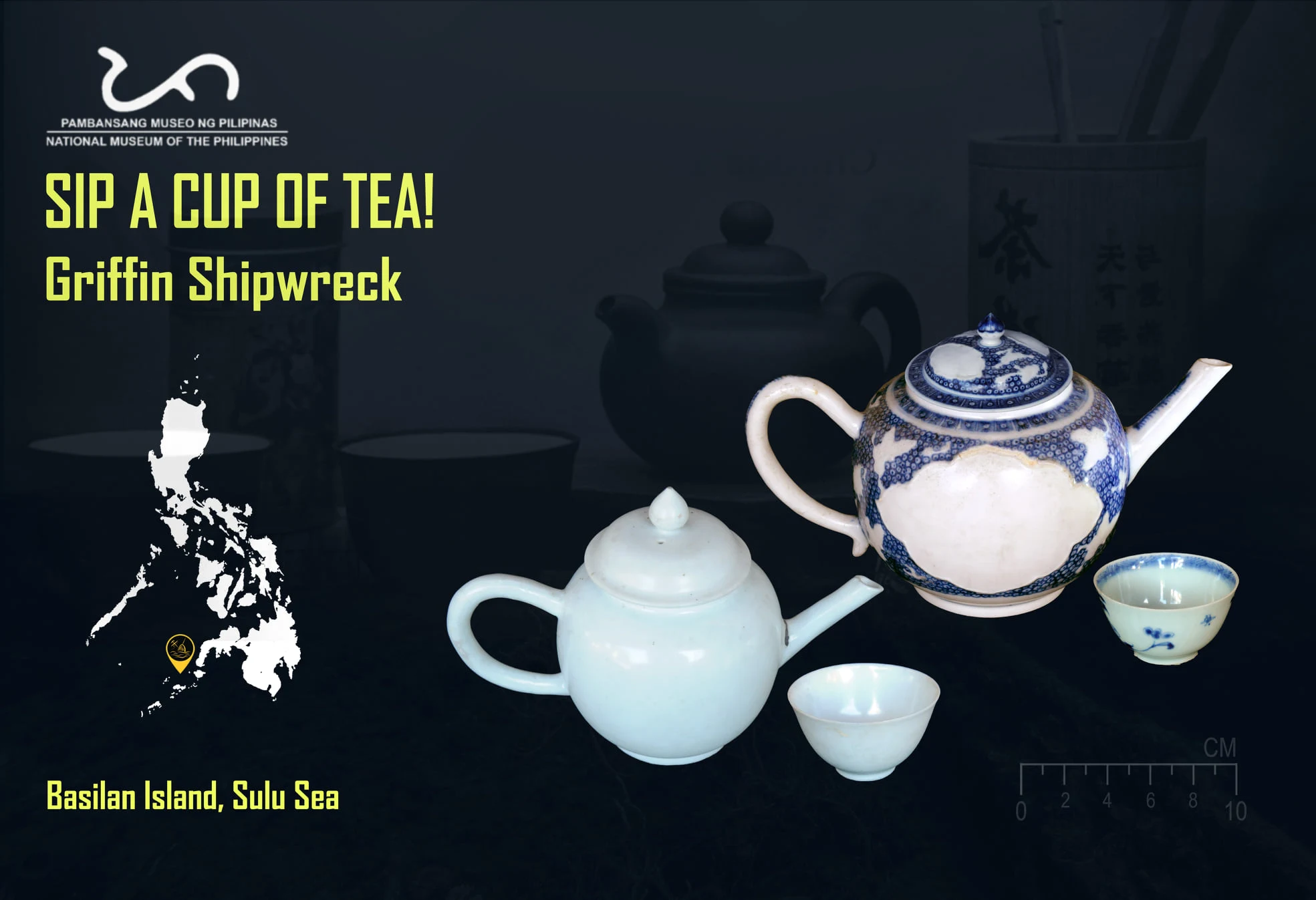History of Tea and the Amazing Teacup Sets from the Griffin & Santa Cruz Shipwreck [Philippines Nautical Archeology]
This article is about the history of tea, featuring teapot and teacup sets from the Griffin, an English East India Company vessel that wrecked in the Sulu Sea near Basilan Island in 1761.
Tea, also known as cha, jia, she, ming, and chuan, originally came from fresh or sun-dried leaves of a wild evergreen tree that goes back to over a thousand years old in the mountains of Yunnan Province in China. It was being consumed for its medicinal properties in Yunnan Province during the Shang dynasty Period (1766–1050 BCE), whereas people from the Sichuan Province boiled tea leaves to consume as a stimulating beverage rather than a medicinal concoction by the end of the Zhou dynasty (1122–256 BCE).
 |
| A 19th century portrait entitled “Loading Tea at Canton” ca. 1852 by Tinqua, depicting a blossoming tea trade in China during this period. © Peabody Essex Museum. Image Source: https://bit.ly/3mjTUfM |
Tea drinking became an alluring and relaxing pursuit by the Tang Dynasty Period (618–906 CE). During gatherings and conventions, people get to enjoy formal and elaborate tea drinking ceremonies prepared by tea masters.
Over time, the consumption of tea spread from China, into the rest of Asia, toward the western world. The English East India Company, during its heyday in the 18th century Common Era, brought tea to every corner of the globe using company ships.
 |
| Image of in situ teapots from the Griffin shipwreck site, © Franck Goddio | Hilti Foundation. Image Source: https://bit.ly/3zaHQB4 |
Excavations of the Griffin shipwreck in 1986 yielded thousands of tea chests and porcelain wares. The ceramic assemblage includes porcelain tea sets and coffee pots, cups, saucers, and lids with landscape, human, and floral decorations. The vessel is a clear testimony of the high demand of tea during the 18th century.
 |
| A curious pufferfish swims towards a blue and white teapot during the excavation of the Griffin. © Franck Goddio | Hilti Foundation. Image Source: https://bit.ly/3zclzmi |
Archaeological study is very important in supporting the accurate interpretation of past events, which helps in reconstructing our history. When a site is disturbed or pilfered, we lose information forever without the significant context to assist us in piecing together our story. This is much more valuable than the selfish individual’s monetary gain or enriching their collections. Our heritage and recounting its narrative through material culture benefits future generations and our aspirations as a nation. If you see or have knowledge of sites being looted, report to your local government authorities immediately or contact the closest NMP office near you.
Related Finds:
Chinese teacups of the Santa Cruz shipwreck
Chinese teacups that were part of the Santa Cruz shipwreck cargo that was discovered in May 2001 off the shores of Santa Cruz municipality in northern Zambales Province. The trade vessel sunk between the late 15th to the early 16th century Common Era (CE), and contained at least 15,000 objects comprising ceramics, objects made of iron, glass, wood, stone, and organic remains from China and other Southeast Asian countries. Learn more about the shipwreck’s story here: https://tinyurl.com/SantaCruzShipwreck.
 |
| Assorted ceramics from the Santa Cruz. Photos © Franck Goddio and Far Eastern Foundation for Nautical Archaeology (FEFNA) |
The Santa Cruz shipwreck yielded more than 500 pieces of teacups comprising 4 general types: 1) monochrome bell-shaped cups potted in a thin porcelain and covered with a white glaze, with some covered with brown glaze on the outside; 2) blue-and-white cups that are made from thicker porcelain, of which a number have Chinese character and assorted floral scroll decorations; 3) monochrome cups with flaring sides and covered with white glaze; and 4) enameled cups with straight rims, made from thin porcelain and covered with white, red, and green glaze. A single cup under this type has a red overglaze with lotus scrolls in the exterior cavetto and a butterfly in the interior cavetto.
 |
| In situ Santa Cruz shipwreck photo. Photo © Franck Goddio and Far Eastern Foundation for Nautical Archaeology (FEFNA) |
The quantity of teacups reflect the high demand and consumption of tea by Southeast Asian societies. The various shapes and decorations also suggest that tea may have been served for different purposes, from daily tea drinking to elaborate ceremonies underpinned by social, economic, and political motivations.
____________________
Credits:
Poster and text by the NMP Maritime and Underwater Cultural Heritage Division
© National Museum of the Philippines (2021)




No comments:
Got Something to Say? Thoughts? Additional Information?